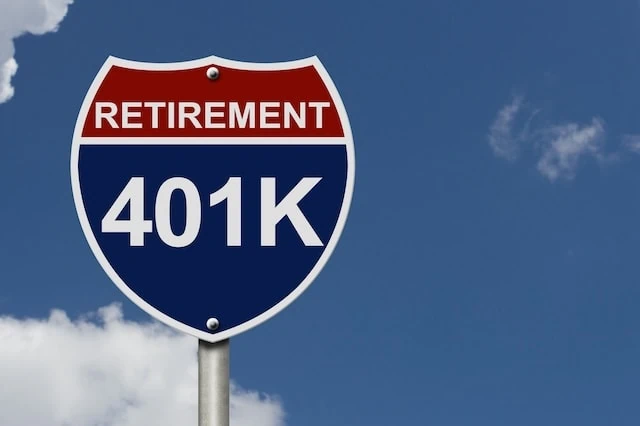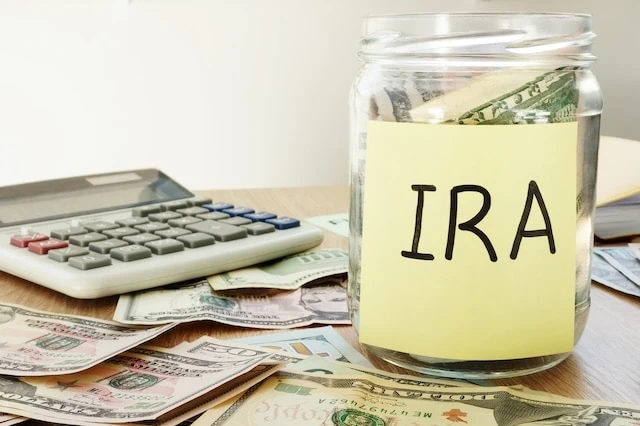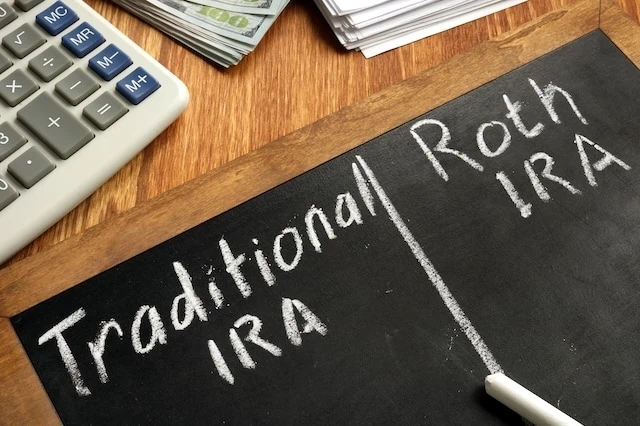Whether you have millions of dollars in your 401(k) or just a few thousand, once you leave your job, you have to make a decision on what to do with that money.
For some retirees, it makes sense to leave their money right where it is. For others, it’s a better idea to move it elsewhere. How you ultimately make your decision comes down to a few financial considerations.
Today, I’m going to walk you through the advantages and disadvantages of letting your 401(k) sit right where it is. And for those who would be better served by transferring their money, I’ll go over your options.
What to Do With 401(k) Retirement Savings

Retirement marks a number of significant shifts for Americans—among them that you stop adding to your retirement savings and instead start pulling money out.
And there’s an awfully good chance that, when the time comes, at least some of your savings will be sitting in a 401(k).
According to the U.S. Census Bureau, 401(k)-style accounts were the most popular type of retirement account in 2020. More than a third (34.6%) of working-age Americans, considered to be people ages 15 to 64, had one of these accounts.
So plenty of us will end up asking, “What happens to my 401(k) after I leave my job?“
You have several choices about how to deal with a 401(k) once you hit retirement. Below are several options, along with the pros and cons of each. This should help you determine which path is the most financially advantageous to you.
Option #1: Leave Your Savings in Your 401(k)

When an employee leaves a company, their employer usually will allow them to keep their 401(k) account as long as they maintain a minimum balance. This is an ideal option for anyone who likes their current plan.
When you leave an employer, you can still manage the investments in your account, though you’ll also keep paying 401(k) plan fees.
However, you can no longer contribute money to that 401(k), no matter your reason for leaving—quitting, getting laid off, or retiring. You can only make withdrawals, cash out your savings as a lump sum, or transfer your savings to another account. And once you get below the account minimum, you must either take a lump-sum withdrawal or roll the remaining balance over into another account (usually, but not always, into an individual retirement account, or IRA).
People who retire with an open 401(k) account can set up regular withdrawals from their 401(k) into a bank account, providing a steady cash flow in retirement. (Your personal withdrawal strategy will vary based on factors such as lifestyle and life expectancy.)
Required minimum distributions (RMDs)
At a certain age, you must take required minimum distributions (RMDs) from your 401(k) and several other retirement accounts. Currently, you must take RMDs starting at age 72, or age 73 if you reach age 72 after Dec. 31, 2022. Starting in 2033, the RMD age will step up again, to 75. In all cases, if you are still working by your RMD age, you can delay taking RMDs until after you retire unless you are a 5% or greater owner of the business sponsoring the plan.
If you have multiple 401(k) accounts, you must withdraw the RMD from each individual account. How much are you required to withdraw? To calculate your RMD, divide your account’s year-end balance from the previous year by your current year’s life expectancy factor, which you find in the IRS Uniform Lifetime Table. (Example: You are 75. Your life expectancy factor is 24.6. Your account balance at the end of last year was $100,000. The math would be $100,000 ÷ 24.6 = $4,065.04. Your RMD is $4,065.04, but that’s a minimum—you can withdraw more if you choose.)
One exception allows you to lower your RMDs. If your spouse is at least 10 years younger than you and that person is listed as the 100% primary beneficiary of your account for the entire year, then you can calculate your RMD with the Joint Expectancy Table. As this factors in both of your ages, it calculates a longer life expectancy and lowers your RMD amount.
One last note: Previously, Roth 401(k)s were also subject to RMDs. But from 2024 onwards, RMDs don’t need to be taken from Roth accounts.
Related: How to Max Out Your 401(k) + Other Retirement Accounts
Option #2: Cash Out Your Savings + Close Out Your 401(k)

Another option on your plate as a retiree is to cash out your 401(k) and receive your savings as a lump sum. This approach could be useful if you need money for a large purchase, such as buying a house.
However, whether you take withdrawals or a lump sum from a traditional 401(k), you need to pay ordinary income tax on the amount you take out*. How much you pay in income taxes will depend on your tax bracket the year in which you make the withdrawal. Depending on the size of your withdrawal—especially in the case of a lump sum—you might be bumped into a higher tax bracket. Thus, a lump-sum distribution from a traditional 401(k) is usually only a wise strategic voice if you have a low balance of 401(k) savings, or if you have a need for the money right away.
You don’t have to worry about this if you have a Roth 401(k). Your contributions were made with after-tax dollars, so you won’t be taxed again when you withdraw money (as long as your distributions are qualified). For a distribution to count as qualified, you must be at least age 59½ and the account must have been open for at least five years.
* Does not apply to people born before Jan. 2, 1936.
Related: How to Start a Retirement Plan [Build Your Retirement Savings]
Option #3: Transfer It Into an Individual Retirement Account (IRA)

Another option is to roll over your 401(k) savings into an individual retirement account (IRA).
An IRA rollover is pretty straightforward. You must either open an IRA or have an existing account. You’ll follow a set of steps outlined by your employer or plan administrator. The 401(k) provider will ensure your 401(k) funds are deposited into your IRA.
When you move funds into a rollover IRA, your money will no longer be invested in the funds offered by your 401(k) plan, so you’ll have to choose investments from scratch. Good news! Whereas 401(k)s usually offer a select set of mutual funds, IRAs typically allow you to invest in a wide range of individual stocks, exchange-traded funds (ETFs), and mutual funds, as well as other asset classes and vehicles. (One small downside: On occasion, 401(k)s will provide access to certain mutual funds, or certain share classes of mutual funds, that you can’t access through an IRA or other self-directed accounts.)
Other benefits? 401(k) plans typically charge fees; many IRAs have no account fees. Also, unlike with a 401(k), you can continue contributing to an IRA after you’ve retired (as long as you have earned income).
Related: IRA vs. 401(k): How These Retirement Accounts Differ
Option #4: Do a Roth Conversion

If you have a traditional 401(k), you could put the money into a Roth IRA through a process called a “Roth conversion.”
When you roll over a 401(k) into a Roth IRA, that money is taxed when you make the conversion. That’s because the 401(k) was funded with pretax money, whereas a Roth IRA must be funded with money that has already been taxed.
In truth, it rarely makes sense to do a Roth conversion when you’re close to or in retirement. It can result in a massive tax hit that will take time to recover from, and it can prevent you from having the funds you need to pay your bills in retirement. It can also increase your taxable income, which could result in higher Medicare premiums and subject more of your Social Security benefits to taxation.
That said, if you have a ways to go before you retire, you could gradually transfer money from tax-deferred accounts to a Roth IRA through a series of Roth conversions. This would especially make sense if you believe you’ll be in a higher tax bracket once you reach retirement. Done strategically, you could reduce your tax hit.
This process can be challenging, so if you’re considering this route, it’s highly recommended to work with a financial advisor or other financial professional.
Related: What Is a Backdoor Roth Conversion? [Retirement Strategy for High-Earners]
Annuity Conversion

Some retirees choose to cash out their 401(k) and move those funds into an annuity, but as retirement options go, this is low on the totem pole.
There aren’t any tax benefits because your money is already being held in a tax-deferred account (your 401(k)). You have extremely limited investment options compared to, say, rolling it into an IRA. You’re also likely to face significantly higher ongoing fees and the potential for punitive surrender charges—and the latter means your income options aren’t as flexible as with other choices.
Related: SEP IRA vs. Roth IRA: What’s the Difference?
What If I Retire Early?

Does your retirement planning have you on track to retire early? That’s great! But that very well could affect your 401(k) withdrawals. Typically, any distributions from a 401(k) before age 59½ are subject to income taxes (at your ordinary tax rate) and a 10% penalty.
But there are exceptions.
The most notable exception is the “rule of 55.” Let’s say you retire or are laid off. If that occurs within a calendar year during which you are or will become at least 55 years old, you would still need to pay income taxes on distributions, but you would not suffer the early withdrawal penalty—if the money remained in your previous employer’s 401(k).
Other exceptions to the penalty on early distributions can be found on the IRS’s website.
Before taking early distributions from your retirement account, consider consulting with a financial advisor.
Related:








